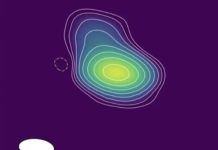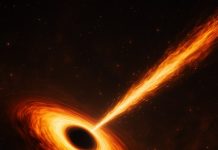
Researchers at the University of Tokyo have developed a new model to explain why we haven’t found as many miniature black holes in the early universe as expected.
These tiny black holes, known as primordial black holes (PBHs), are thought to be potential candidates for dark matter, the mysterious substance that makes up most of the universe’s mass.
The study, conducted by graduate student Jason Kristiano and his supervisor, Professor Jun’ichi Yokoyama, was published in Physical Review Letters and Physical Review D.
They used quantum field theory, typically applied to the very small, to explore the early universe. Their findings suggest that there should be far fewer PBHs than previously thought.
Understanding the Universe
The universe is believed to be about 13.8 billion years old, starting with a Big Bang, followed by a rapid expansion called inflation. During this time, the universe went from being uniform to developing structure and detail. Most of the universe is empty, but it appears to be heavier than what we can see, leading scientists to theorize the existence of dark matter. Some researchers believe PBHs could be a significant component of dark matter.
Primordial Black Holes and Dark Matter
PBHs are interesting because they might explain dark matter and recent discoveries of black hole mergers detected through gravitational waves. However, despite the strong reasons to believe in their abundance, PBHs haven’t been directly observed.
Kristiano and Yokoyama reviewed existing models for PBH formation and found discrepancies with observations of the cosmic microwave background (CMB), a remnant of the Big Bang. If a model doesn’t match solid observations, it can’t be fully accurate.
New Insights from Quantum Field Theory
The researchers used a novel approach to adjust the leading PBH formation model from cosmic inflation to better align with current observations. At the universe’s beginning, it was incredibly small, and cosmic inflation expanded it rapidly. During this time, waves in this tiny space could have had large amplitudes but very short wavelengths. These early short waves, when coherent, could have amplified much larger waves seen in the CMB today.
Implications for PBHs
If early small-scale fluctuations affect larger-scale fluctuations in the CMB, this might change our understanding of the universe’s structure. By measuring wavelengths in the CMB, scientists can constrain phenomena relying on these shorter wavelengths, including PBHs.
Kristiano explained, “Our study suggests there should be far fewer PBHs than needed if they are a strong candidate for dark matter or gravitational wave events.”
Gravitational wave observatories like LIGO, Virgo, and KAGRA are currently on a mission to observe the first small black holes, likely PBHs. These observations will provide evidence to refine their theory further.
This new model offers a fresh perspective on why we haven’t found many miniature black holes and helps us understand the early universe and the elusive dark matter.
Source: University of Tokyo.



